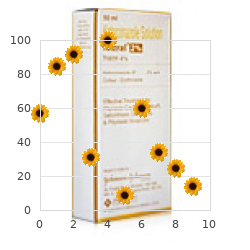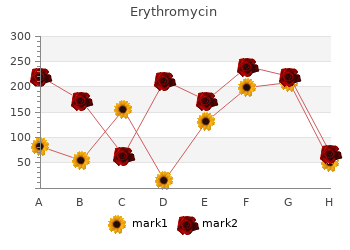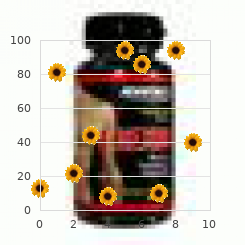Erythromycin
2018, Utah State University, Baldar's review: "Erythromycin 500 mg, 250 mg. Only $0,37 per pill. Quality online Erythromycin OTC.".
Comparison of the clinical efficacy of twice-daily Ritalin and once-daily Equasym XL with placebo in children with Attention Deficit/Hyperactivity Disorder discount 500mg erythromycin with mastercard. Attention deficit hyperactivity disorder 126 of 200 Final Update 4 Report Drug Effectiveness Review Project 48 cheap erythromycin 250mg amex. An open-label, randomized, active- controlled equivalent trial of osmotic release oral system methylphenidate in children with attention-deficit/hyperactivity disorder in Taiwan. Steele M, Weiss M, Swanson J, Wang J, Prinzo RS, Binder CE. A randomized, controlled effectiveness trial of OROS-methylphenidate compared to usual care with immediate-release methylphenidate in attention deficit-hyperactivity disorder. Canadian Journal of Clinical Pharmacology/Journal Canadien de Pharmacologie Clinique. Development of a new once-a-day formulation of methylphenidate for the treatment of attention-deficit/hyperactivity disorder: proof-of- concept and proof-of-product studies. New pharmaceutical forms: a slight advantage for a small number of children. Switching from immediate- to sustained- release psychostimulants in routine treatment of children with attention-deficit hyperactivity disorder. Cognitive and behavioral effects of multilayer- release methylphenidate in the treatment of children with attention-deficit/hyperactivity disorder. Once-daily multilayer-release methylphenidate in a double-blind, crossover comparison to immediate-release methylphenidate in children with attention-deficit/hyperactivity disorder. Continuity of Methylphenidate Treatment for Attention-Deficit/Hyperactivity Disorder. Effect of methylphenidate formulation for attention deficit hyperactivity disorder on patterns and outcomes of treatment. Effect of methylphenidate formulation on treatment patterns and use of emergency room services. Impact of methylphenidate formulation on treatment patterns and hospitalizations: a retrospective analysis. Continuity in methylphenidate treatment of adults with attention-deficit/hyperactivity disorder. Sanchez RJ, Crismon ML, Barner JC, Bettinger T, Wilson JP. Assessment of adherence measures with different stimulants among children and adolescents. Sonuga-Barke EJ, Swanson JM, Coghill D, DeCory HH, Hatch SJ. Efficacy of two once- daily methylphenidate formulations compared across dose levels at different times of the Attention deficit hyperactivity disorder 127 of 200 Final Update 4 Report Drug Effectiveness Review Project day: preliminary indications from a secondary analysis of the COMACS study data. A comparison of once-daily extended-release methylphenidate formulations in children with attention-deficit/hyperactivity disorder in the laboratory school (the COMACS Study). Comparative efficacy of two once daily methylphenidate formulations (Ritalin LA and Concerta) and placebo in children with attention deficit hyperactivity disorder across the school day. Silva R, Muniz R, Pestreich LK, Brams M, Childress A, Lopez FA. Efficacy of two long- acting methylphenidate formulations in children with attention- deficit/hyperactivity disorder in a laboratory classroom setting. Muniz R, Brams M, Mao A, McCague K, Pestreich L, Silva R. Efficacy and safety of extended-release dexmethylphenidate compared with d,l-methylphenidate and placebo in the treatment of children with attention-deficit/hyperactivity disorder: A 12-hour laboratory classroom study. Medical Review: Focalin XR® (dexmethylphenidate hydrochloride extended-release capsules). Greenhill LL, Muniz R, Ball RR, Levine A, Pestreich L, Jiang H. Efficacy and Safety of Dexmethylphenidate Extended-Release Capsules in Children With Attention- Deficit/Hyperactivity Disorder. Journal of the American Academy of Child & Adolescent Psychiatry. Efficacy and duration of effect of extended-release dexmethylphenidate versus placebo in schoolchildren with attention-deficit/hyperactivity disorder. A randomized, double-blind, crossover study of once-daily dexmethylphenidate in children with attention-deficit hyperactivity disorder: rapid onset of effect. Dexmethylphenidate extended-release capsules in children with attention-deficit/hyperactivity disorder. Journal of the American Academy of Child & Adolescent Psychiatry. A double-blind, placebo-controlled study of modified-release methylphenidate in children with attention-deficit/hyperactivity disorder. Side effects of methylphenidate and dexamphetamine in children with attention deficit hyperactivity disorder: a double-blind, crossover trial.



Several groups have now demonstrated that CMV reactivation class I–recognizing NK cell receptors) is required for the acquisition leads to the emergence of population of terminally differentiated of NK cell functionality cheap 500 mg erythromycin amex. Therefore 250 mg erythromycin free shipping, a significant proportion of have potent cytotoxicity and IFN- production in response to both blood NK cells are “licensed” or cytoxic. NK cell clones that lack acute myeloid leukemia (AML) cell lines and primary leukemic receptors that recognize self-MHC class I are also present within blasts. Once activated, these cells would not be restrained by reaction on NK cells and GVL reactions is not yet understood. In fact, in a small study by Leung et al examining autologous transplantation recipients who Because NK cells make up the majority of the lymphocytes had NK cells expressing KIR that recognized MHC that was not recovering early after transplantation, investigators have examined present in the patient had less disease recurrence, perhaps support- the impact of the absolute lymphocyte count or the absolute NK cell ing an autologous NK-mediated GVL. Rapid lymphocyte or NK recovery decipher the differences between licensed and unlicensed NK cells, (at day 28 after allo-HCT) has been linked to reductions in relapse rates but such concepts are particularly relevant in the allo-HCT setting, or improved disease-free survival. Therefore, there represents an expansion of the mature NK cells in the graft (homeo- may be a dynamic interplay among recipient MHC class I, donor static expansion) or newly generated, stem cell–derived NK cells is not NK cells, and infectious complications that may modulate early, NK known and is difficult to determine. However, based on these data, cell–mediated GVL reactions after allo-HCT. However, mecha- methods to enhance NK cell recovery, such as the use of IL-15, may be nisms that control these reactions have not been entirely elucidated warranted to prevent relapse and are currently being tested and present opportunities to enhance GVL. A variety of clinical studies have linked NK cells to successful outcomes after allo-HCT. For example, HCT grafts with higher Prior high-profile studies demonstrated that incompatibilities be- numbers of NK cells are associated with a less acute GVHD tween donor KIR and recipient MHC class I (ie, KIRL mismatch) (aGVHD) and chronic GVHD (cGVHD). Other research has linked donor NK characteris- recent work also implicates the presence of activating KIR in the 336 American Society of Hematology donor and protection from AML relapse. In 2 large registry reports peripheral tolerance is best evidenced by scruffy mice or in humans by Cooley22and Venstrom,23 the presence of activating KIR in the with IPEX (immunodysregulation polyendocrinopathy and enteropa- donor was associated with a significantly less AML relapse and thy, X-linked) syndrome, in which the lack functional Foxp3 leads improved disease-free survival. Although there were subtle differ- to severe and uncontrolled lymphoproliferation and autoimmu- ences between the 2 studies, both suggest that activating KIR nity. This a thymic selection pathway resulting in so-called “natural” or work raises the possibility that allo-HCT donors might be selected nTregs, as well as the peripheral conversion of Tcons to Tregs, for enhanced GVL. The feasibility of this concept is currently being resulting in “induced” or iTregs (for review, see Feuerer et al30). The testing in a clinical trial in which allo-HCT donors are prospectively thymic pathway of Treg development involves selection steps that being assessed for KIR gene content to determine whether, in are similar to but distinct from the developmental events that occur addition to HLA typing, KIR gene content can be used in donor during thymic selection for Tcons. Regarding the development of selection (“Selecting a Favorable KIR Donor in Unrelated HCT for iTregs, recent studies show that in the presence of TGF- and IL-2, AML,” www. Further naive T cells can be converted to iTregs, but other conditions have evidence for a direct GVL effect of NK cells is provided by Miller et also been described. Tregs functionally suppress a wide range of cell types, including T cells, NK cells, B cells, and APCs, in an MHC-unrestricted manner that occurs only when the Adoptive therapy with NK cells cells are in close physical proximity (contact; for review, see One significant limitation is that the numbers of NK cells/kg of 31 32 Shevach and Zimmer et al ). Although studies have suggested recipient weight obtained by leukophoresis are relatively small 31 7 that Treg activation is required for suppression, more recently, ( 2 10 /kg). No study has linked human GVHD with NK cell studies in humans question this because resting Tregs from patients infusions, so increasing the NK cell dose is one obvious approach to 33,34 with cancer could suppress NK cell functions. In this regard, several promis- observations were due to differences in the assays used, target cell ing methods are currently being tested, including expanding NK types tested, or prior in vivo activation is not known. In particular, Imai et al have pioneered the Several potential mechanisms of Treg-mediated suppression have use of K562 cells transduced with IL-15, the IL-15 receptor- chain, been put forth using in vitro T-cell assays and knockout mice, but no and a potent costimulatory molecule, 4-1BBL. Therefore, these cells single pathway has been shown to be clearly implicated over mimic the interactions that NK cells receive from aAPCs and 25 another, perhaps suggesting that Tregs function through multiple induced significant NK cell expansion and functionality. Similar mechanisms depending on the context or the cell type being to this approach, work by the Lee group has used the same concept 31 35 suppressed (for review, see Shevach and Wang et al ). For of aAPCs with the 4-1BBL costimulatory molecule, but instead of example, Tregs may contact APCs directly, resulting in the attenua- IL-15, they transduced aAPCs with IL-21/IL-21R. Before these tion of APC function through interactions between CTLA-4 and studies, the role of IL-21 on NK cell function was controversial, but, LAG-3 (on Tregs) binding to CD80/CD86 and MHC class II (on surprisingly, these aAPCs have shown profound NK cell activation 26 APCs). Alternative methods of Treg-induced suppression may be and proliferation ( 40 000-fold over 3 weeks). These IL-21– through neuropillin-1 (NRP-1), which prevents access of APCs to activated NK cells are also being tested in humans (“IL-21- effector cells. Alternatively, Tregs can mount an immunological Expanded NK Cells for Induction of Acute Myeloid Leukemia attack on several different cell types through a granzyme/perforin [AML]),” www. Other mechanisms by which Tregs may mediate other approaches to expanding NK cells ex vivo include coculture 27,28 suppression are through soluble factors, such as counterregulatory with irradiated EBV-infected cell lines. The exact mechanism cytokines (eg, TGF- , IL-10, IL-27, IL-35) or the production of for how some EBV lines activate and expand NK cells is unknown, adenosine by cell-associated ectoenzymes (CD39 and CD71). Tregs and GVHD Preclinical murine transplantation models have convincingly estab- Tregs: development and function lished that Tregs have the capacity to prevent alloreactive T-cell Tregs make up 5% of the peripheral blood T-cell compartment responses and experimental GVHD (for review, see Riley et al36). Phenotypically, they Although the early data on human Tregs and allo-HCT were mixed, are CD4 T cells that lack expression of the IL-7 receptor CD127 the majority of recent studies support a role for Tregs in the and constitutively express the high-affinity IL-2 receptor CD25 (ie, protection from both aGVHD and cGVHD.

Interactions buy erythromycin 500mg fast delivery, warnings: pyrimethamine is contraindicated in megaloblastic anemia resulting from folic acid deficiency order erythromycin 500mg with visa. Caution in patients with seizures, renal failure, asthma or G6PD deficiency. All patients taking pyrimethamine should receive folinic acid (not folic acid) to decrease risk of myelosuppression. Initial monitoring of blood count at weekly intervals. Indications and trade names: treatment-naïve and pretreated HIV+ patients. In patients with renal or moderate hepatic impairment, no dose adjustment is required. The lower dosage in Dutrebis is possible due to a new formulation. Side effects: raltegravir is very well tolerated – in studies, there have generally been no more adverse events than seen with placebo. At a frequency of 1% to 10%, dizzi- ness, stomach ache, flatulence, obstipation, hyperhidrosis, arthralgia, tiredness, weakness. Case reports on rhabdomyolysis, hepatitis, insomnia. Interactions, warnings: raltegravir is eliminated via UGT1A1-mediated glu- curonidation, so that relevant interactions with other antiretroviral agents are unlikely. Strong inducers of UGT1A1 like rifampicin reduce plasma levels of ralte- gravir. If a combination is unavoidable, raltegravir dose should be doubled. Omeprazole or other gastric acid inhibitors may increase the plasma levels of ralte- gravir. Comments: first-in-class integrase strand transfer inhibitor. Well-tolerated, effective in the setting of multiple resistances as well as in ART-naïve patients. Relatively low resistance barrier, BID dosing required (new once daily formulation currently under investigation). For detailed information see page: 102 Rebetol, see Ribavirin. Indications and trade names: chronic hepatitis C, only in combination with inter- feron and with some DAAs. In Europe, the license for HIV/HCV-coinfected patients only applies to Copegus. Solution, 40 mg/ml Dosage: daily dose 800 mg for body weight <65 kg, 1000 mg for 65–85 kg, 1200 mg for >85 kg. Capsules are divided into two daily doses and taken with meals. Treatment duration depends on the genotype and success of treatment. Drug Profiles 707 Side effects: the most frequent side effect is hemolytic anemia (Hb decrease by at least 2 g/dl obligatory), gastrointestinal complaints, headache and fatigue may also occur. Rarely lactic acidosis, pancreatitis in combination with NRTIs. Interactions, warnings: ribavirin is contraindicated in severe coronary disease, renal failure, decompensated liver cirrhosis, and hemoglobinopathy. It is also contraindi- cated in pregnancy (teratogenicity). Before reducing or discontin- uing ribavirin, however, consider erythropoietin and transfusions. Avoid concurrent treatment with other myelosuppressive drugs (AZT). Ribavirin can lead to lactic acidosis in combination with other NRTIs. Most impor- tantly, ddI should be avoided while care should be taken with all other NRTIs like d4T. Possible antagonism with abacavir (mechanism unclear). Efavirenz-induced depression may worsen on ribavirin. Monitoring of lab values (blood count, ALT, amylase, lipase) initially at biweekly intervals and then monthly. Comments: still used with some DAA combinations for HCV therapy. Indications and trade name: infections with Mycobacterium avium complex (MAC) in combination with other drugs (usually ethambutol and azithromycin). Also for patients with tuberculosis, when rifampicin is contraindicated.


Supposeasmall set of alternative struc- tures for a parasite epitope retain similar function discount erythromycin 500mg otc. This functional set constrains the range of acceptable escape mutants order erythromycin 250 mg overnight delivery. Immune pressure ANTIGENICITY AND PHYLOGENY 185 favors change of epitopes within the acceptable set, eventually return- ing to the original epitope. Phylogenetic pattern will reveal short-term changes and occasional long-term similarity. T cell pressure based on MHC binding may be particularly likely to create such patterns. A para- site that can escape from a particular host’s MHC array will be favored. The next host will likely have a different MHC pattern, perhaps favor- ing a return to the epitopes lost in the previous host. Testing for this pattern requires detailed data over different temporal scales. The genetic variants of the V3 loop may fall into relatively few conformational, antigenic types. The range of types may be constrainedbystabilizingselection, caus- ing short-termphylogenetic fluctuations between types but occasional convergence to past types within phylogenetic lines of descent. Third, distinct antigenicity between phylogenetically close isolates implies very rapid diversifying selection. They analyzed eleven consecutive serum (antibody) samples and eight SIV isolates taken at about four-month in- tervals over a total of forty-one months. They tested the eighty-eight pairwise reactions between serum antibodies and viral isolates. The data showed viral escape mutants emerging at intervals of about fifteen months, each escape followed approximately eight months later by new antibody responses that matched the escape variants. Several studies of HIV escape mutants have been published (see references in Beaumont et al. Combinations of diversifying, stabilizing, and convergent selection may determine the relationship between HIV phylogeny and antigenic- ity(Holmes et al. Diversifying selection within hosts favors es- cape variants that avoid antibodies or T cells. Diversifying selection between hosts favors mutants that avoid MHC recognition or immuno- logical memory. Stabilizing selection constrains the range of variants. Convergent selection causes recurrence of previous antigenic types in response to diversifying selection and the stabilizing constraints that limit the range of alternative forms. Together, these factors group HIV 186 CHAPTER 11 isolates into a limited number of immunological types. The immunolog- ical classification does not match the phylogenetic classification. They sequenced the V3 loop of the viral envelope from eighty-nineisolatescollected over a seven- year period. The isolates evolved over time through a series of replace- ments, with different sequences dominating in frequency at different times. Two divergent lineages formed about three years after infection. Most subsequent isolates mapped tooneofthesetwomajor lineages. The same sequence of 6 amino acids at the tip of the V3 loop evolved convergently in the two lineages. In summary, phylogeny provides thehistoricalcontext in which to interpret immunological patterns. Hypotheses about natural selection can be tested by mapping the sequence of immunological changes onto the lineal history of descent. Relations between antigenicity and phylogeny suggest hypotheses about how natural selection shapes anti- genic variation. Consider, for example, the data for influenza A in pigs and birds (fig. Antigenicity groups isolates according to current host species, whereas phylogeny groups isolates according to the his- tory of transfers between species. Adaptation to different hosts may shape antigenicity. This could oc- cur by adaptation of viral surfaces to host receptors associated with at- tachment. Or the nature of immune pressure might differ significantly between birds and pigs. Such hypotheses, suggested by statistical pat- terns of association between phylogeny and antigenicity, must be tested by molecular studies.
10 of 10 - Review by O. Charles
Votes: 225 votes
Total customer reviews: 225

